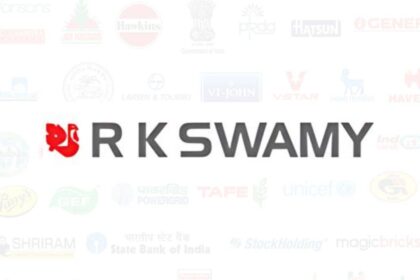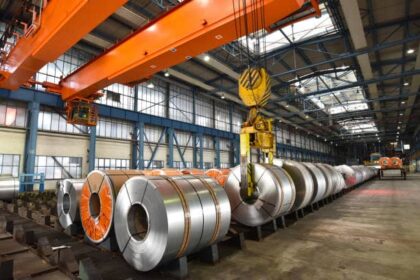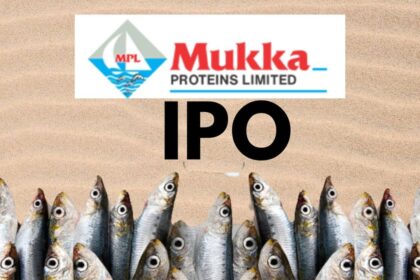Are you planning to invest in an IPO and wondering what is GMP in IPO? Well, GMP or Grey Market Premium is an important aspect to consider before investing in an IPO. In this article, we will discuss what is GMP in IPO, its significance, and how it affects the decision-making process of investors.
Wondering what is GMP in IPO and its significance? Read this article to know about Grey Market Premium and how it affects investors’ decision-making process.
Stock market doesn’t only teaches to make money but it also teaches lot about life, patience, persistence and wisdom.
Raj Mishra
Introduction
Investing in an IPO can be a great opportunity to earn high returns on investment, but it also involves certain risks. Before investing in an IPO, it’s important to analyze various factors like the company’s financial health, management, and business prospects. One such factor is GMP, which is an indicator of the demand for the IPO shares in the market. Let’s delve into the details of what is GMP in IPO and how it affects the investors.
What is GMP in IPO?
GMP or Grey Market Premium is the price at which an IPO share is traded in the grey market before its listing on the stock exchange. It’s an unofficial market where IPO shares are bought and sold by investors even before the official listing. GMP is an indicator of the market demand for the IPO shares and reflects the perceived value of the IPO. It’s calculated by subtracting the issue price of the IPO from the price at which it is traded in the grey market.
Significance of GMP in IPO
GMP is a significant factor to consider before investing in an IPO. It provides insights into the demand for the shares and the market perception of the IPO. A high GMP indicates that there is a strong demand for the IPO shares, which can lead to a higher listing price. It also implies that investors have a positive outlook on the company’s prospects, which can be a good sign for the investors. On the other hand, a low GMP indicates that the market demand for the IPO shares is weak, which can lead to a lower listing price. It also implies that investors have a negative outlook on the company’s prospects, which can be a warning sign for the investors.
Factors affecting GMP in IPO
GMP is influenced by various factors, such as the company’s financial health, management, business prospects, market conditions, and overall economic environment. A company with strong financials, experienced management, and a promising growth outlook is likely to generate high demand for its IPO shares, leading to a higher GMP. Conversely, a company with weak financials, inexperienced management, and a poor growth outlook is likely to generate low demand for its IPO shares, leading to a lower GMP.
How does GMP affect investors’ decision-making process?
GMP can have a significant impact on the decision-making process of investors. A high GMP can create a fear of missing out (FOMO) among investors, leading them to invest in the IPO even if it’s overpriced. On the other hand, a low GMP can create doubts about the IPO’s potential, leading investors to avoid investing in it. It’s important to remember that GMP is just an indicator of the market demand for the IPO shares and shouldn’t be the sole criterion for investing in an IPO.
FAQs
Q. What is the difference between GMP and IPO price?
The GMP is the price at which the IPO shares are traded in the grey market before their listing on the stock exchange, whereas the IPO price is the price at which the shares are offered to the public during the IPO.
Q. Is GMP a reliable indicator of the IPO’s performance?
No
Q. Is GMP a reliable indicator of the IPO’s performance?
No, GMP is not a reliable indicator of the IPO’s performance as it’s an unofficial market and doesn’t reflect the actual market conditions. The GMP is based on the perceived value of the IPO, which can be influenced by various factors like market sentiments, rumors, and speculations. The actual performance of the IPO can be different from the GMP, and investors should not solely rely on it while making their investment decisions.
Q. How can investors participate in the grey market?
Investors can participate in the grey market by placing orders with the unofficial dealers who deal in IPO shares. However, it’s important to note that trading in the grey market is illegal and involves high risks, as there is no regulatory authority to oversee the transactions.
Q. What are the risks involved in investing in an IPO with a high GMP?
Investing in an IPO with a high GMP involves the risk of overvaluation, as the share price may not be justified by the company’s financials and growth prospects. It also involves the risk of a market correction, where the share price may fall after the listing due to the high valuation. Therefore, investors should conduct their due diligence and analyze all the factors before investing in an IPO.
Q. Can a low GMP be a good sign for investors?
Yes, a low GMP can be a good sign for investors if it’s due to the market conditions rather than the company’s fundamentals. A low GMP can create an opportunity for investors to buy the shares at a lower price during the IPO, which can lead to higher returns in the long run.
Q. How does the IPO subscription affect the GMP?
The IPO subscription indicates the demand for the IPO shares, and a higher subscription can lead to a higher GMP. However, it’s important to note that the subscription and GMP are not directly correlated, and there can be other factors that influence the GMP.
Q. Can GMP be negative?
Yes, GMP can be negative, which means that the IPO shares are traded below the issue price in the grey market. A negative GMP indicates that there is weak demand for the IPO shares and reflects the negative market sentiment towards the IPO.
Conclusion
In conclusion, GMP or Grey Market Premium is an important aspect to consider before investing in an IPO. It’s an indicator of the market demand for the IPO shares and reflects the perceived value of the IPO. However, investors should not solely rely on GMP while making their investment decisions and should conduct their due diligence and analyze all the factors like the company’s financials, management, and growth prospects. Investing in an IPO involves high risks, and investors should only invest after thorough analysis and research.






